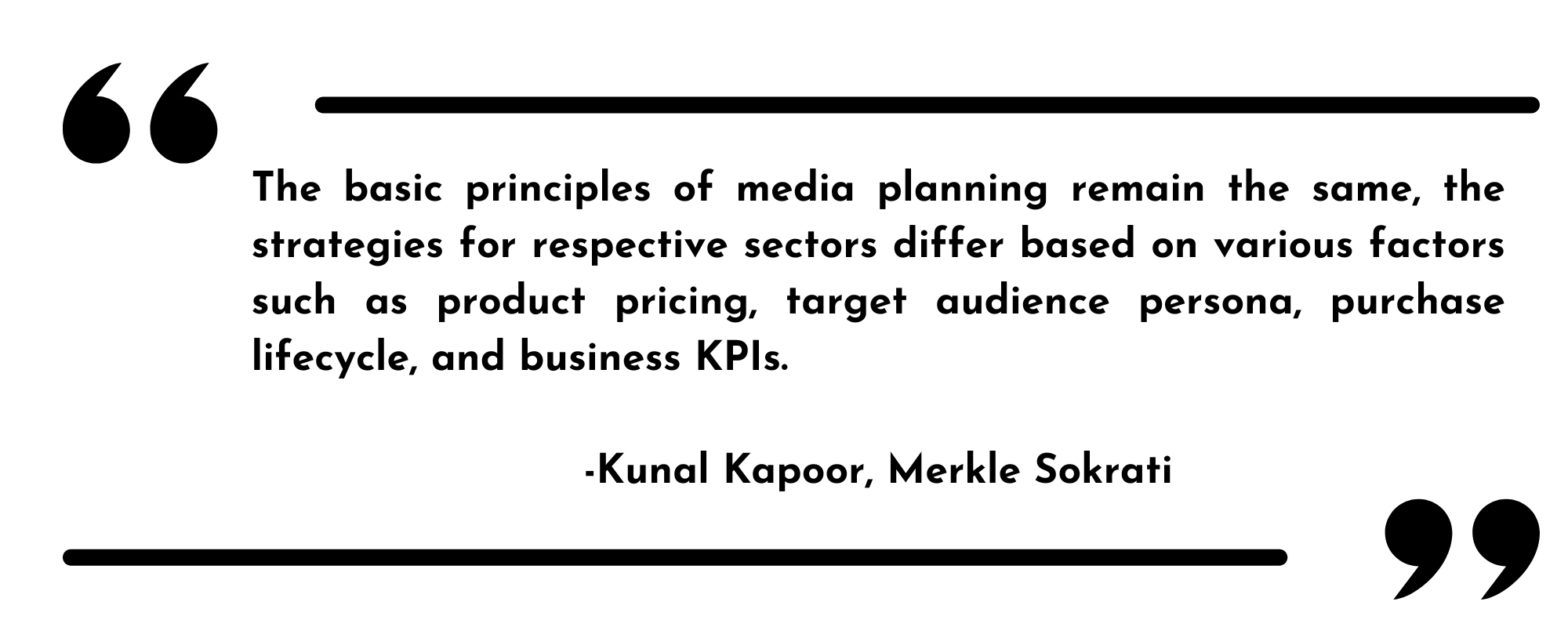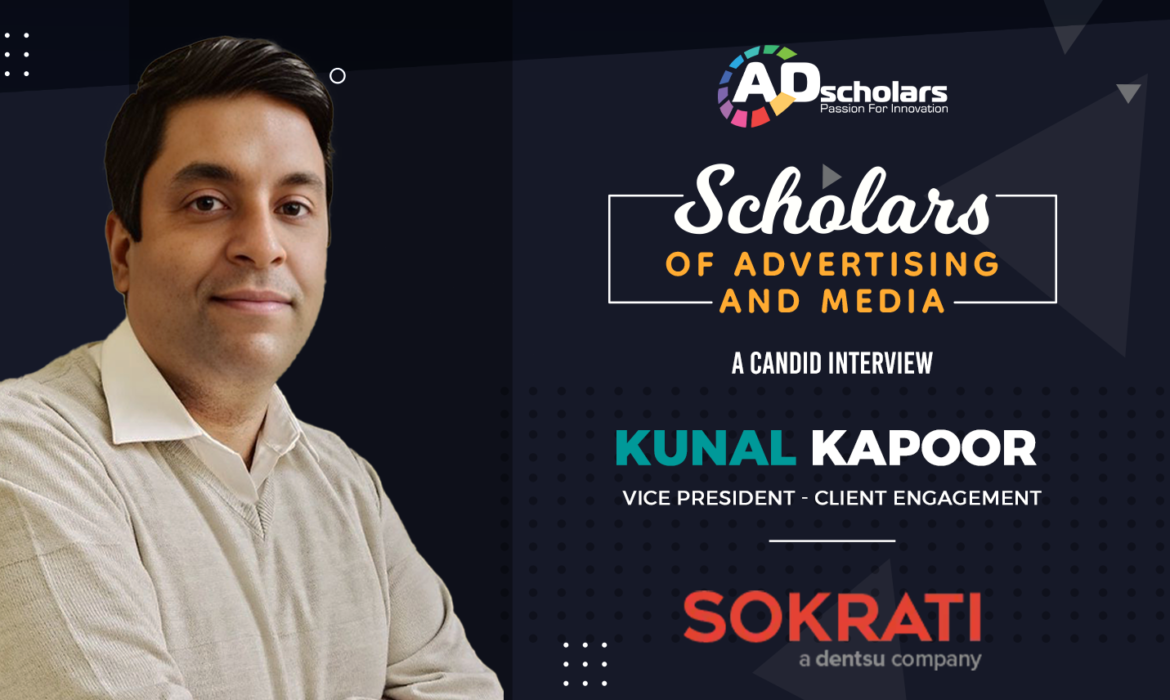Merkle Sokrati’s Kunal Kapoor: Charting Unseen Horizons in Digital Marketing
Kunal Kapoor, Vice President of Client Engagement and Delivery at Merkle Sokrati, a seasoned professional with 16+ years in Marketing, Sales, Business Development and Client Strategy, shares valuable insights in this exclusive interview.
He highlights the strategic alignment of campaign goals with business objectives and addresses ethical considerations in AI for digital marketing. His perspectives offer a comprehensive view of navigating the dynamic advertising landscape.
How has your extensive 15-year experience in the advertising industry shaped your illustrious professional journey? Could you share your background and noteworthy milestones that you encountered?
I earned my Masters in Business Management from BIT Mesra, Ranchi, in 2007, marking the commencement of my 16+ years of professional journey. In the first half of my career, I worked with prominent media houses and telecommunications giants such as HT Media, Jagran Group, and Tata Docomo. During this period, I learnt about B2C marketing, delving into the practical applications of the 4 Ps of marketing – Product, Price, Promotion, and Place. My expertise centered around new media, mobile marketing, and convergence marketing.
At the age of 28, I ventured into entrepreneurship, serving as the Chief Marketing Officer for a startup for nearly 5 years, specializing in mobile marketing. Following the downturn in the telecom industry in the mid-2010s, I successfully transitioned to core digital marketing. Over the past 3 years, I’ve been a vital part of Merkle Sokrati (dentsu India), leading the client engagement cluster for the large clients’ portfolio in my role as Vice President – Client Engagement.

You manage a wide range of clients from Consumer Durables to EdTech to Healthcare. How do you align your strategies to vary with regard to different sectors and at the same time fulfil client objectives and expectations?
Although the basic principles of media planning remain the same, the strategies for respective sectors differ based on various factors such as product pricing, target audience persona, purchase lifecycle, and business KPIs. Taking these factors into consideration, the media mix and strategy are formulated with a comprehensive funnel approach – employing different strategies for different stages of the funnel: top (awareness), middle (consideration), and bottom (conversion). It also necessitates a clear definition of short-term and long-term business goals by the brand custodians. Without such clarity, the goalposts may shift unpredictably, potentially disrupting campaign stability and impeding sustainable growth.
Everyone is rushing to adopt AI in their businesses. What according to you are some of the ethical implications of using AI in digital marketing? How do you think AI will help in customer engagements and the marketing industry overall?
The ethical implications of AI in digital marketing revolve around principles such as fairness, privacy, and accountability. To ensure adherence to these principles, brands and agencies must actively work towards implementing ethical frameworks and establishing monitoring mechanisms. It is crucial for them to take responsibility for the potential impact AI can have on society and customers.
Despite these concerns, AI brings forth numerous benefits. It aids digital marketers in enhancing campaign accuracy by providing data-driven insights that are challenging to extract manually. Additionally, it contributes to increased productivity by saving time spent on mundane tasks like trend analysis and campaign optimization. This time-saving aspect allows digital marketers to focus on innovation, experimentation, and ideation.
Moreover, AI plays a pivotal role in deepening customer engagement through activities such as personalization at scale, personalized re-marketing, cross-channel targeting, and data-driven decision-making based on behavioral trends and funnel-level analysis.

Adding on to the above question, with the rise of voice assistants like Alexa, Google Assistant etc., people are shifting towards voice search. Dentsu has been focusing on voice search assistant, or VSO strategies for geographical targeting. Can you tell us what are some of the strategies you use?
Voice search results differ from traditional search outcomes due to their conversational nature, focusing on answering specific questions rather than presenting a list of results. Consequently, Voice Search Optimization (VSO) requires a distinct approach compared to traditional SEO. At Dentsu, our VSO strategies concentrate on identifying relevant long-tail keywords for your business and seamlessly incorporating them into your website content. Key strategies include:
- Creating locally relevant content: Enhance your local voice search visibility by generating content tailored to local audiences.
- Claiming and optimizing business listings: Ensure your business information is accurate and up-to-date, maximizing visibility in local search results.
- Including natural language in content: Address common questions and concerns of local customers through the use of natural language in your content.
- Utilizing schema markup: Provide additional context about your website’s content to search engines, enhancing visibility in voice search results.
- Mobile optimization: Prioritize mobile optimization, considering that voice search is predominantly performed on mobile devices. This involves ensuring your website is mobile-friendly, optimizing website speed, and implementing responsive design.
Digital media is widespread in this time and age. How do you ensure maintaining the human touch while curating strategies? How important is it to have a human touch in the advertising realm?
Despite the rise of AI technology, the human touch remains indispensable in any brand’s digital cycle. The reason is machines excel at analyzing data and identifying patterns, but it’s the human touch that infuses creativity and emotions into digital campaigns and strategies. For instance, machines can adeptly track customer touchpoints based on call-to-action (CTA), but they can’t interpret how an audience is likely to react emotionally to an ad or a campaign.
Hence, the winning formula for any brand’s digital campaigns lies in emotion-driven content generation complemented by action based on data insights provided by AI technologies. We contribute flexibility and creativity to the digital world while interpreting changes in consumer behavior. In crafting campaigns for clients, we weave unique and original narratives designed to resonate with their target audience. By marrying data patterns with human input derived from consumer behavior, we ensure effective outreach to the right audience personas.
Can you share some examples of successful campaigns that you carried out at Dentsu? How did you implement key learnings in your future campaigns?
When a digital marketer engages in crafting a digital campaign, there are numerous factors and elements to monitor. These include, but are not limited to, audience targeting, marketing mix, creative assets, landing page design, user journey, and call to action. As campaigns unfold, they accumulate insights through data and platform algorithms. Our ongoing effort is to pinpoint the sweet spots—different combinations of the mentioned factors that prove effective for the brand in terms of scale and Customer Acquisition Cost (CAC). This iterative process allows us to build on successful elements, fostering sustainable growth for clients over months or years.
At Sokrati, we collaborate with leading brands across diverse sectors such as E-Commerce, Retail, BFSI, Automobile, and Fashion. Notably, for a prominent EV brand, our SEO best practices and innovative strategies led to the ranking of 100+ branded keywords in the 1st position on Google SERP within three months of launch. For a BFSI client, a major bank, we achieved a remarkable 314% growth in new account opens month on month, coupled with a 76% reduction in CAC. This success was attributed to full-funnel optimization, audience expansion, leveraging high-intent users, and continuous product enhancement.
Another noteworthy campaign involved a leading matrimonial brand, where the primary goal was to boost brand awareness and consideration through Programmatic Media and Display Campaigns. Through rich media formats, we achieved a 4.5x increase in engagement while simultaneously reducing CPCs by 65%.

Google’s upcoming third-party cookies deprecation is set to drastically change the advertising landscape. What changes, good or bad, do you think it will bring to the programmatic and media landscape?
The absence of third-party cookies will make it challenging for advertisers to track and deliver targeted ads across the web. This could lead to less effective advertising and a potential decrease in the overall size of the digital advertising industry. Publishers will also face difficulties monetizing their websites as the ability to sell targeted advertising through cookies diminishes. In response, publishers will need to evolve and launch their own ad solutions.
Several cookie alternatives, such as Device Fingerprinting or Universal IDs, are on the horizon to help the industry adapt to this major change. Businesses relying on cookies for digital advertising will need to transition towards zero-party data to stay relevant in a post-cookie era. Zero-party data is information voluntarily shared by users with businesses, including preferences, interests, and contact information. It is more accurate, reliable, and privacy-friendly. With rich databases of first-party data, media companies and publishers will be well-positioned to succeed in a cookie-free world.
How do you determine the campaign’s effectiveness? What are the certain characteristics or key objectives that you look for?
Following the thumb rule, campaign goals align with the client’s business objectives. Campaign effectiveness is gauged by how well the strategy and results contribute to achieving the brand’s business goals. To measure campaign success, tracking interactions and conversions across digital channels is essential, attributing these conversions to the campaign.
Before diving into measurement, it’s crucial to define business objectives, establish campaign goals and targets, identify the target audience, and set Key Performance Indicators (KPIs). Common KPIs include Conversion Rate, Unique Visitors, Bounce Rate, and Page Views. The campaign’s outcomes are then tracked and measured using robust analytics tools like GA, AMC, HubSpot, etc.


